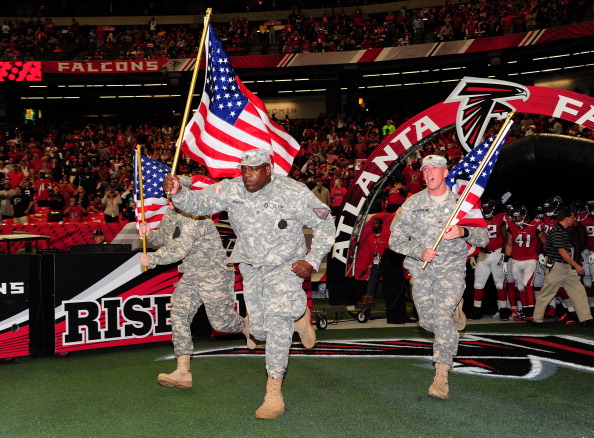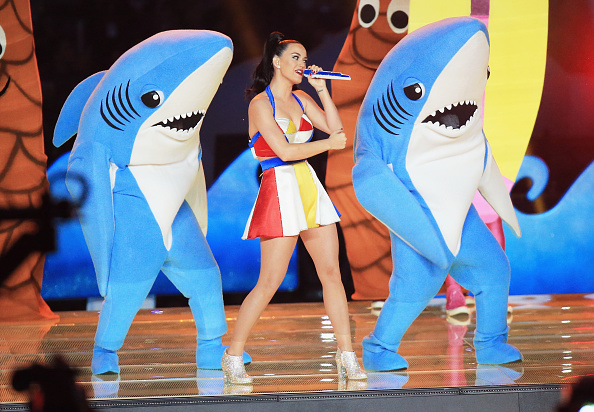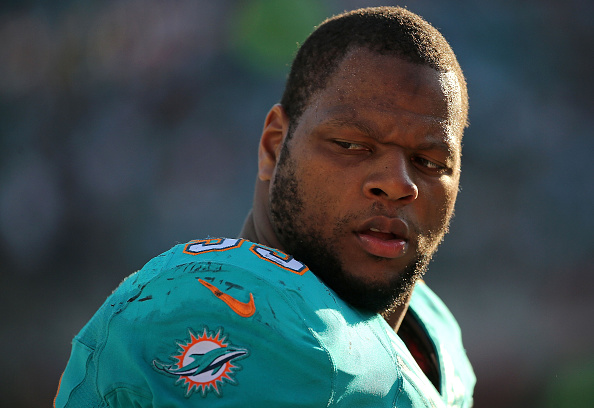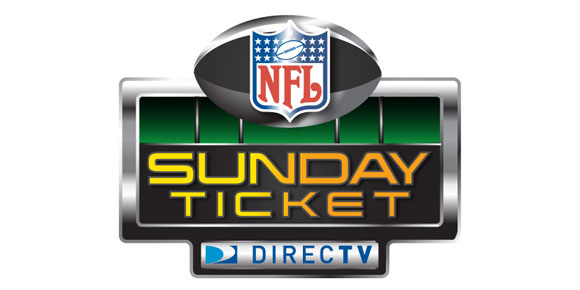A lot of folks were shocked to learn earlier this week that oft-maligned NFL commissioner Roger Goodell earned $34.1 million in 2014. But when you consider that the league’s revenues have skyrocketed for much of Goodell’s reign, and that CNN Money estimated it would pull in about $13 billion in 2015 revenue, it’s not difficult to come to grips with the notion that the league’s de facto CEO is being paid like one of the nation’s top executives.
The NFL is a profit monster, which for most of us is cool because we know we’re feeding said monster by watching games, drafting fantasy teams, buying tickets and purchasing merchandise. Hooray for capitalism!
The problem is that the league has quite frequently given itself a bad look, establishing a reputation for nickel-and-diming clients, customers and even league “employees” (the quotations marks are important). Here’s a look at nine ways in which the NFL has increased profits at the expense of fans, supporters, contributors and Americans in general.
1. NFL officials aren’t full-time employees
NFL officials might not like the idea of having to commit to the league on a full-time basis because many of them earn a lot of money at their day jobs. I get that, but it’s also become apparent that nothing outside of concussions poses a bigger threat to the league’s reputation than the officiating blunders which have become something of an epidemic.
And if employing these officials full time will decrease mistakes even a little bit, the NFL is doing a disservice to its teams, players and fans by continuing to allow officials to juggle an over-complicated, nuanced rule book, meetings, travel and training sessions with high-paying, high-demand “side jobs.”
It’s apparent that officiating is a full-time job during the season, which spans half the year. And there’s plenty the league can give officials to do (and practice) during the offseason. Bringing officials on full time without causing them to lose day-job money would probably cost the NFL around $50 million per year, but can you put a price tag on reputability?
2. NFL cheerleaders are paid peanuts
In California — where four of the league’s 25 cheerleading squads now reside — a bill was signed into law this past summer designating cheerleaders as employees rather than independent contractors. That meant they’d finally be legally entitled to meal breaks, sick leave and minimum wage.
What’s amazing is that this was even necessary.
Class-action lawsuits have also been necessary. At least five have been filed, against the Jets, Raiders, Buccaneers, Bills and Bengals, with cheerleaders claiming they’ve received less than minimum wage while receiving no compensation for practice time, promotional work and mandatory expenses. Four of those five lawsuits have been settled in favor of the current and former cheerleaders, with the Bills suit still up in the air.
But how sad is it that these suits are merely forcing teams worth billions to give these women minimum wage for their efforts? “Lacy T.,” a Raiderette who filed the original lawsuit against the Raiders in 2014, claimed she was making less than $5 per hour of work. Presumably in response to pressure generated by that lawsuit, the Raiders began paying their cheerleaders exactly $9 per an hour — at the time the minimum wage in California.
Hooray?
3. In the last two decades, taxpayers have spent nearly $7 billion on NFL stadiums
That’s according to a recent report from the Taxpayers Protection Alliance, which also determined that 29 of the league’s current 31 stadiums were built and/or renovated using at least some public money.
NFL teams have made a habit of holding their cities hostage, threatening to move if billionaire owners don’t receive public subsidies to build their stadiums. This dynamic has forced local politicians and their constituents to choose whether to risk losing their team or cough up an increased portion of their hard-earned income in order to further line some rich dude’s pockets.
It’s extortion in a thinly-veiled disguise.
4. Until recently, NFL teams accepted cash from the Pentagon in exchange for military tributes
It can be a special moment whenever we see American military personnel and veterans honored before, during and after NFL games, which is why it was a shame to learn in the fall that the league’s teams and their American pro sports cohorts had been collecting taxpayer money via the Department of Defense in exchange for said ceremonies.
A report released in November found that the military paid 18 NFL teams more than $5.6 million between 2012 and 2015 in order to cover Salute to Service-related tributes, with the Atlanta Falcons accepting $879,000 from the Georgia Army National Guard.
The league office pleaded ignorance, claiming that any payments received from the DOD were only supposed to be used by teams for recruiting or marketing purposes, but not in ceremonial tributes. Nonetheless, the NFL is vowing to pay back any money collected from the military for purposes other than advertising.
5. The NFL doesn’t pay Super Bowl halftime show performers
You mean Beyonce, Bruno Mars and Chris Martin — together worth about half a billion dollars — had to work 25 minutes last Sunday night while receiving an overwhelming amount of publicity for no compensation? I know, you’re not crying them a river.
But let’s remember that these artists are their own corporations, with dozens of employees and contractors relying on them for income. The league isn’t just refusing to pay the artists, but by extension, the league is causing plenty of others to work for free or get paid by those stars not making any money off the NFL. And what’s more, the league had the gall a year ago to ask Katy Perry to pay them for the right to perform at halftime.
How many revenue streams does the league really need?
6. The NFL won’t invest in a minor league
The NFL avoids having to invest in a developmental or secondary league — which could in theory act as a safety net for its players but wouldn’t likely be lucrative — by taking advantage of the fact the NCAA has provided it with a free farm system, rigged by a silly rule that forces prospective NFL players to spend three years in school before declaring for the draft.
Strictly from a business standpoint, the NFL has little incentive to risk losing money on a league that could help a lot of rejected and former NFL players land on their feet. But it could be argued that by avoiding that expense and risk, the league is leaving its players high and dry (or sending them out of the country or indoors), which probably also diminishes the product by giving fewer out-of-work pro football players opportunities to bounce back.
How many more Kurt Warners have we missed out on because they had no choice but to ditch football altogether?
7. The NFL nickels and dimes Super Bowl cities
I’m going to come to your house this Saturday night and throw a massive party. Please buy all of the snacks, the beer and the decorations. It’ll be an awesome party, and you’ll make a ton of new friends. But I won’t be around to clean up on Sunday morning. Hope you’re cool with footing the bill for that as well.
You’re not? OK, I’ll just find another friend to take advantage of.
In this hypothetical, in case it wasn’t obvious, I’m the NFL and you’re the city of San Francisco.
Turns out the league did promise to reimburse Santa Clara — technically the Super Bowl 50 host — for all costs associated with hosting the game. But the city of San Francisco, which for all intents and purposes hosted Super Bowl week while providing headquarters for the league, the media and most of the events surrounding the game, is left with a $4.9 million bill.
“Our taxpayers shouldn’t be left with a $5 million tab,” Jane Kim, a member of San Francisco’s Board of Supervisors, told CBS News during Super Bowl week in the Bay Area. “I’m not against the Super Bowl parties. What I don’t support is us subsidizing a party for one of the wealthiest corporations in the world.”
It should be noted that the NFL isn’t unique in leaving host locations to fend for themselves financially. The IOC certainly doesn’t lend much of a financial hand to Olympic hosts and Brazil foot basically the entire $15 billion bill for the 2014 World Cup. But this scale isn’t as large, and the fact that the NFL is willing to give about $3.5 million back to the city of Santa Clara just goes to show how petty it is being with a (relatively speaking) minuscule expense.
This is again a hostage situation. Jim Lazarus, vice president of the city’s Chamber of Commerce, admitted the city “might not have gotten the bid” to host the game over Houston and Miami had it insisted on having expenses reimbursed. Of course, because teams and local officials are willing to bend over so far backwards for the NFL, it wasn’t surprising to discover via SF Weekly that almost nothing in this regard was on paper. The league said it was throwing a party at San Francisco’s place and San Francisco said, “OK.” To an extent, that’s on the city for committing to a major event without covering itself financially, but at the same time, we’re talking about approximately 0.05 percent of the league’s estimated profit margin.
8. NFL contracts generally aren’t guaranteed
It’s a misconception that the NFL’s collective bargaining agreement with the players has any sort of mandate regarding guaranteed money in contracts. Teams have the right to guarantee as much or as little money as they’d like, and that’s also the case in the NBA. The difference is that it’s become an accepted reality that while NBA players usually get all of the money they signed for, NFL players quite frequently do not.
That might one day change, but it’s up to the players and their agents to push together for guaranteed contracts. The problem is that it’s easier for 32 front offices to essentially collude by setting a standard of non-guaranteed contracts, because in a league with 1,952 players, short careers, high injury rates and a low degree of superstars, the players have very little leverage.
But can’t the NFL afford to at least adopt a minimum guarantee in order to take care of its players in such a volatile industry? It’s a shame the NFLPA didn’t fight harder to have that included in the latest CBA, but it’s a shame the league would even include such a thing in negotiations. The way contracts are currently structured, the NFL is often failing to take care of its own.
9. Fans are strong-armed and gouged by NFL Sunday Ticket and DirecTV
The NFL handcuffs out-of-market fans who want to watch all 16 of their favorite team’s games by forcing them to pay for a premium television package, NFL Sunday Ticket, which gives them access to every out-of-market game all season long for $239.94. And that package is only available with DirecTV.
Only care to watch one team every Sunday? Doesn’t matter, you have to pay for all of them or none of them.
Prefer Comcast or Dish or Time Warner? Too bad. You have to switch to DirecTV, because DirecTV is paying the NFL $1.5 billion a year. Deal with it.















